Description of the albuka and growing a flower
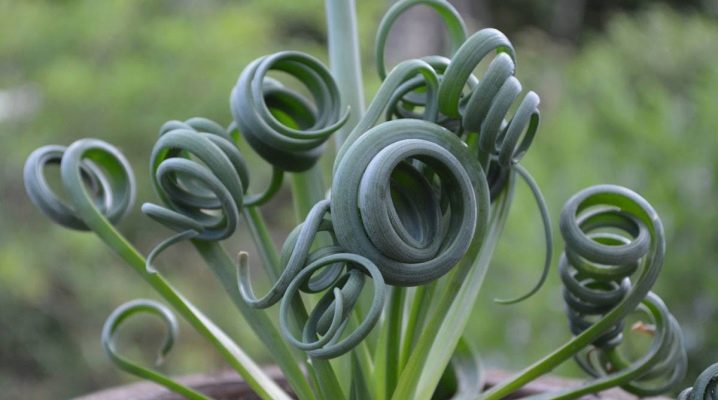
The description of the albuka is impressive even for those who have not seen it: a plant with curls. At the same time, planting and growing a flower is available even for beginners. The plant perfectly adapts to growing conditions, unpretentious and tenacious, you just need to get acquainted with its life rhythms.
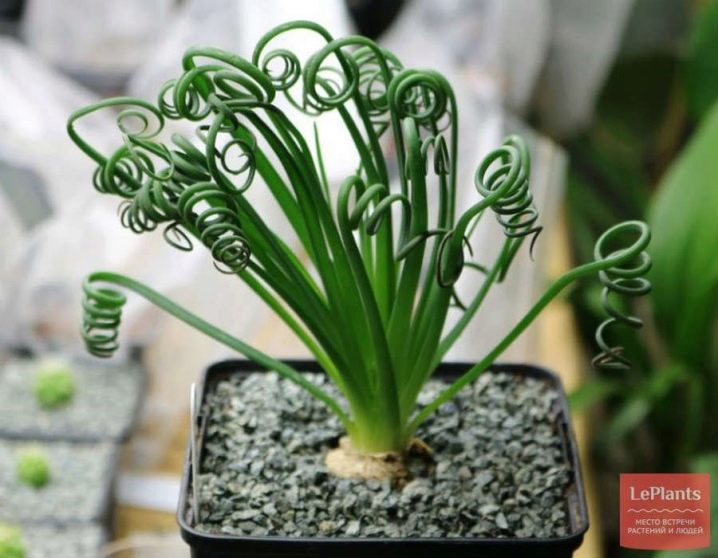
general description
Albuca is a genus of the asparagus family. This flower is a close relative of agave, aloe, eucharis, haworthia, yucca and many other cultures that the asparagus family presented to flower growers.
Plants can be from 8 to 100 cm in height, depending on the species. The leaves are collected in a rosette, they are juicy, but narrow, of different shapes, flat or tubular, twisting in spirals at the ends, of different lengths, from 10 to 100 cm. Thanks to the curls, the plant looks very exotic. But the plant needs spirals not for beauty. This culture is a succulent, that is, it knows how to store moisture. Due to its shape, the leaves evaporate less water.
The flowers are medium-sized, up to 3 cm in diameter, but graceful, they sit on peduncles up to 100, more often up to 60 cm long. Flowering lasts up to 2 months. Flowers are single or collected in tassels. The number of petals is 6, the corolla resembles a bell, and the general appearance of the flower is an orchid. Corolla shades are white, greenish, yellow, with stripes.


The word albicare means "shoot white", this name the flower received for its ability to suddenly throw out tall peduncles with garlands of flowers. Flowers attract not only with their unusual appearance, but also with a delightful aroma. Those types of albuca that exude aroma smell like cream and vanilla. After flowering, capsules with black seeds are formed.
The homeland of the plant is South Africa. But some species are found in the Mediterranean, Asia and Europe. Flowers love to live in crevices of rocks, in rocky areas, in which seasons of high water are replaced by complete drying out.
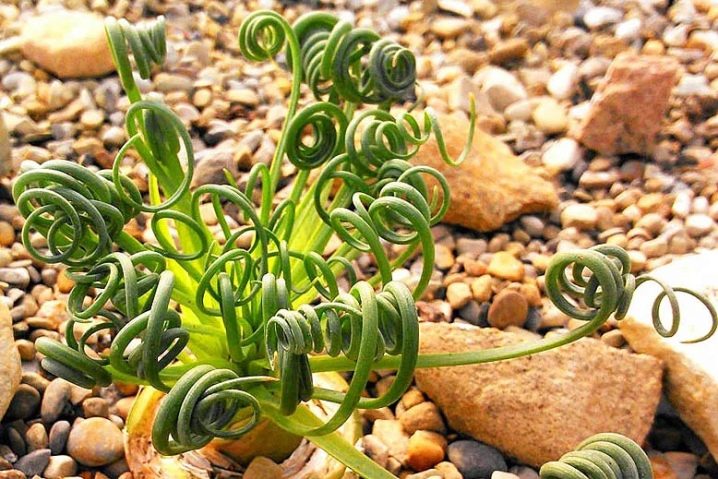
Views
There are more than 150 species in the genus albuca. Of these, several have become widespread in indoor floriculture.
- Bracts (Albuca bracteata)... A plant with straight, narrow leaves, reminiscent of an onion. The leaves are long - up to 1 m. The bulb is large, light green, up to 10 cm in length. The flowers are very beautiful. Collected in an abundant raceme on a peduncle up to 90 cm tall. The number of flowers can be up to 100 pcs. The flowers are white, with apple-green stripes, very fragrant.
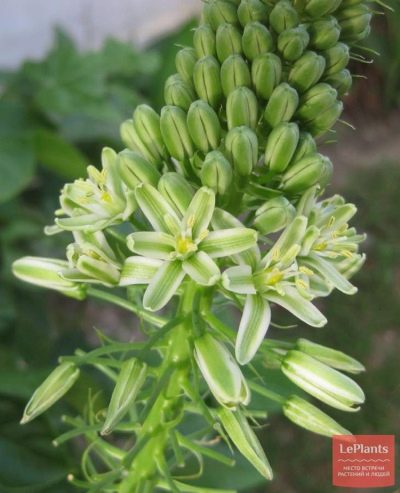
- Polyphila (Albuca polyphylla) - a more modest variety than the bracts, but original. The bulbs are very large. They grow thin, hair-like leaves against the background of such a large bulb. The leaves are slightly fleshy, with tubules, similar in structure to the leaves of garlic or onions. Slightly curly, which makes the plant look "shaggy". The length of the leaves is up to 30 cm. Peduncles are low, up to 20 cm, gray-blue. On peduncles 3-5 unusual flowers resembling white-green crocuses. A popular variety is Augrabies Hills. The aroma is bright.
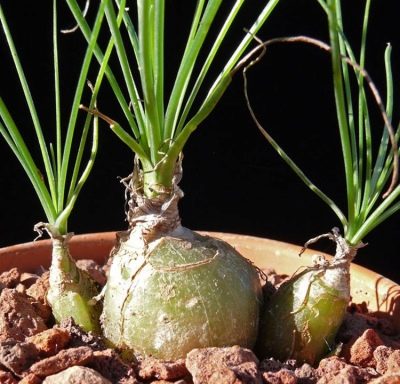
- Humilis (Albuca humilis) - a plant very similar to Polyphilus' albuca, only even more miniature. Likes to grow and flourish with companies. The plant bulbs give only 1-2 thin leaves. Peduncles up to 10 cm in height are crowned with 1-3 flowers with six rounded petals up to 2 cm in length. The color of the petals is white-cream, in the center there is a green stripe. Three petals open more strongly, the other three, even in full dissolution, are almost pressed against each other. The pressed petals have bright yellow tips. The general impression is that the flowers are similar to galanthuses or irises. The flowers give off a strong scent of marzipan.

- Viscose (Albuca viscosa) - species up to 35-40 cm high with magnificent leaves.The leaves are like tubes twisted into regular spirals. The surface of the leaves is slightly thorny. The flowers are apple-green, with a darker stripe along the petals, three petals open wide, three are kept almost closed, covering the yellow stamens. There can be up to 6 flowers on a peduncle. The flowers are not too decorative, they are smallish, and the peduncle is loose. The plant is prized mainly for its original foliage.

Other species are more or less similar to those listed. Some are difficult to discern even for professional botanists. However, many have their own original look and potential for indoor floriculture.
For example, in the species Albuca pulchra beautiful fluffy peduncle with pure white flowers, reminiscent of a candle. Have Albuca pendula the flowers are bright, yellow, gracefully drooping, and the peduncle is of good density. Albuca nelsonii - one of the largest species, found in botanical gardens, height up to 60 cm, but impressive dense foliage and flower stalks with candelabra. In the open field, such a prominent plant successfully replaces lilies.
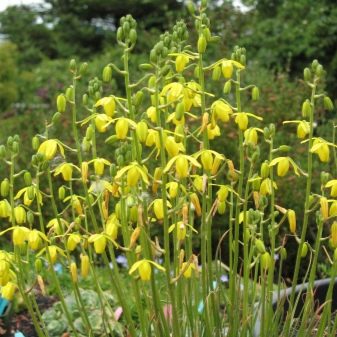
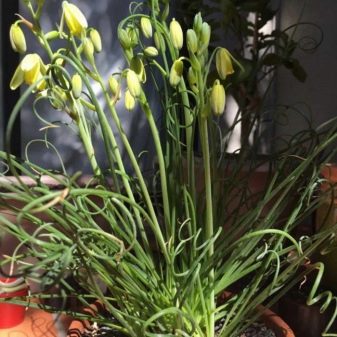
Extraordinarily attractive Albuca concordiana... It is a short plant with a completely different type of curl from the Viscose albuca. Viscose leaves are twisted in spirals, like snail shells. In Concordiana, the leaves are twisted in the shape of a corkscrew, and not only at the ends, but along the entire length, from the very beginning at the bulb. The flower looks unearthly and dramatic.
The same springs in the species Albuca hallii - this is one of the smallest species, up to 15 cm tall. Albuca hallii it can be rather unattractive, with a few "untwisted" leaves and a liquid peduncle, it looks faded. But in good conditions, the leaves twist into tight beautiful springs.
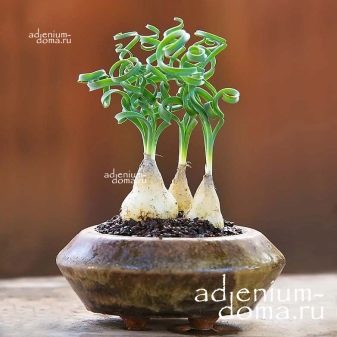
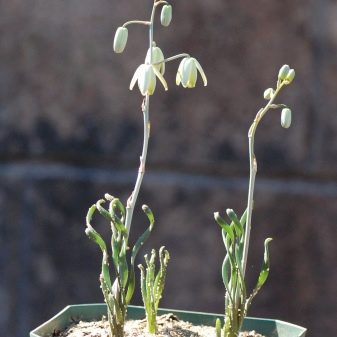
Landing
Transplanted in the fall, when the dormant period of the plant ends.
The soil for planting is loose, grainy, and breathable. A thick layer of drainage is required at the bottom of the pot... Up to 1/3 of the sand is added to the soil. The pot is selected according to the diameter of the bulb. It is optimal if the pot is no more than 2 times the diameter of the bulb.
Some varieties, for example, Polyphila, grow beautifully in the colony, for them the pot should be low and wide, but not too wide. Excess soil in bulbous plants provokes diseases.
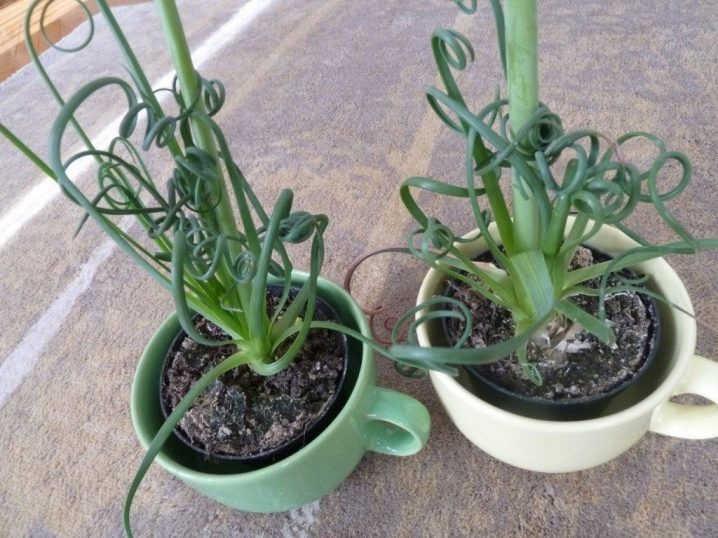
Care
In standard home conditions, the plant is unpretentious. But he has his own preferences.
- The flower loves the abundance of the sun. You need to choose the brightest place in the room.
- Optimum air temperature in winter + 13 ... 15 ° С, in summer + 25 ... 28 ° С.
- Abundant watering during the period of active growth and flowering. They watered, imitating natural conditions - the moisture should completely wet the earthen lump, but between waterings it should dry out completely. The roots of the plant are adapted to such a regime, but they will not perceive constant dampness well.
- By the dormant period, watering is gradually reduced.
- They are fed regularly with fertilizer for succulents. Only during the active period.
You need to water it with warm and settled water. Watering in a pan is preferable so that the bulb does not get wet. But if, when watering from above, the soil dries well in 1-2 days, then you can water it from above.
Albuca is a plant of alternating temperatures. The temperature in winter is reduced so that during the day it is + 10 ... 15 ° С, at night + 6 ... 10 ° С. Growing in this mode will ensure lush bloom.
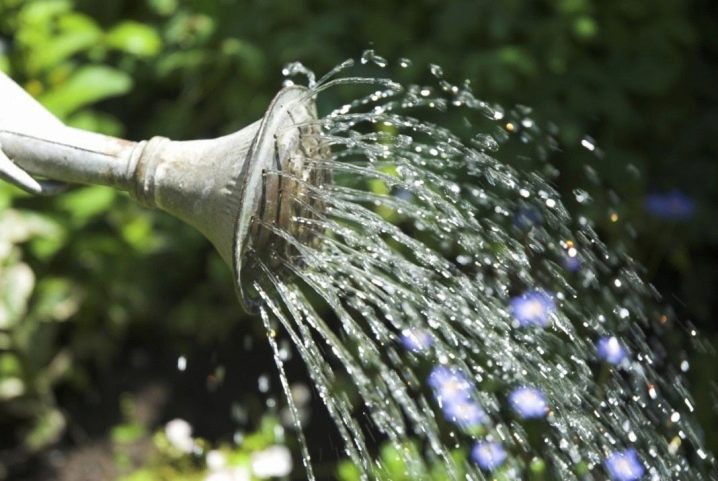
Albuca life cycle:
- April May - flowering (about 2 months, or 10 weeks);
- early summer - smooth sending to rest, up to drooping leaves;
- June-November - dormant period;
- November-April - gradual resumption of activity.
You need to look after these periods in different ways. During the dormant period, the plant is stored at room temperature in any place and is not touched, with the onset of activity, it is placed in the most illuminated place, stress is arranged by alternating temperatures, watered and fertilized.
Lighting is important for all types, and for some, decorativeness strongly depends on it. Albuca Concordiana looks more spectacular, the brighter the lighting. This species is relatively moody.The bulbs do not like even slight waterlogging during the dormant period, they easily rot or wither. Concordiana can produce few leaves in summer, and then the plant looks bald.
But if the bulb is solid, then everything is in order. New foliage will appear in the fall and the flower will become lush again.
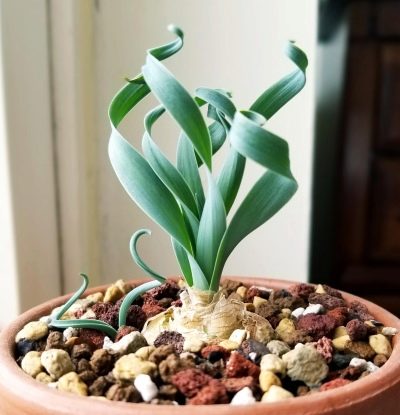
Reproduction
The plant forms baby bulbs. It is with them that the flower is most often propagated. Plants grown from children bloom the next year, in spring - in May. The bulbs are immediately planted in small, up to 8 cm, individual pots.
Albuca seeds remain viable for no more than 6 months. Seed propagation instructions.
- Sowing in the ground for succulents.
- Cover with foil, keep crops at a temperature of + 26 ... 28 ° C.
- Moisturize, ventilate, monitor the level of moisture. In no case should moisture stagnate.
- Shoots appear in 2 weeks.
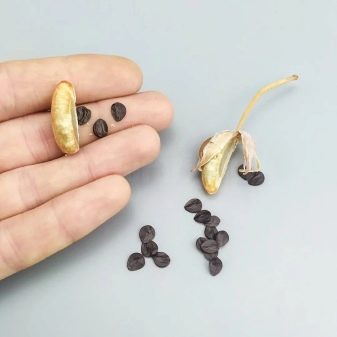
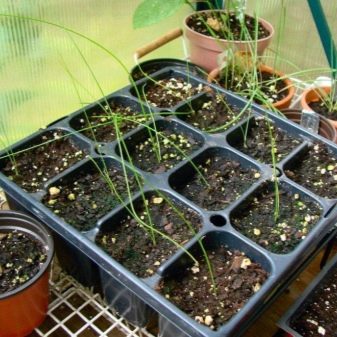
In young plants, the leaves are straight, they begin to curl with age. Albuca grown from seeds blooms in the 3rd year. You can propagate by dividing the bulb, but the method is risky. The onion is cut into 2-3 parts, before reaching the bottom, planted as usual, wait for the emergence of sprouts from each part. But it's better to wait for the onion to split on its own. Albuca Viscose (spiral) itself forms new bulbs under the scales, gradually the upper scales become thinner, and one bulb can be divided into several.
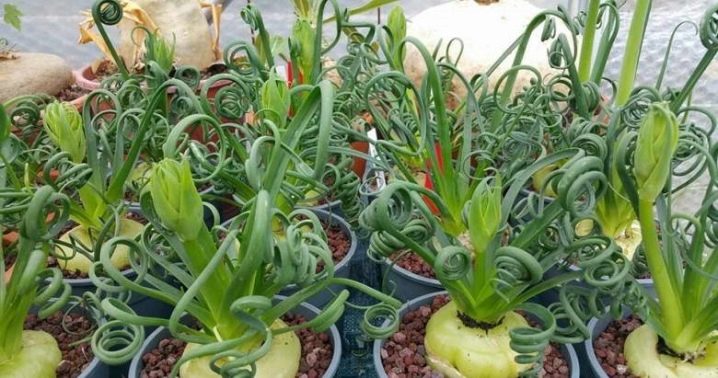
Diseases and pests
In overly dense soil with poor drainage, the plant can suffer from root rot or fungal diseases. If there is a suspicion that the plant is damp and flooded, watering is immediately stopped, the substrate is allowed to dry completely... Or the plant is taken out, washed in potassium permanganate and dried well. In the future, the bulb is placed in ideal conditions: an abundance of light, the most loose soil. You can plant a diseased albuka in a mixture of sphagnum, sand and perlite.
And also in the rooms, the flower can be affected by a spider mite. In this case, the plant is treated with Fitoverm or another acaricide.
In case of violations in care, the plant will immediately respond to the lack of flowers. If the albuka is actively growing tops, but refuses to bloom, you should check if the plant has enough light, and if there is an excess of nitrogenous fertilizers.
Albuka is an interesting, peculiar flower that does not require any maintenance in the summer. This is an ideal choice for a hot window sill, balcony, loggia and occasionally absent owner.














The comment was sent successfully.